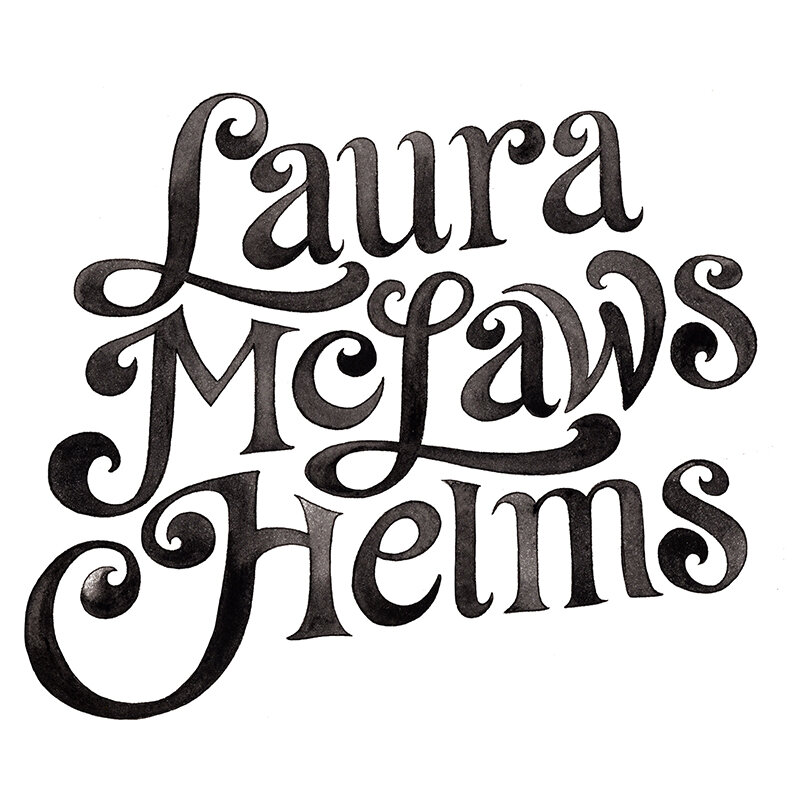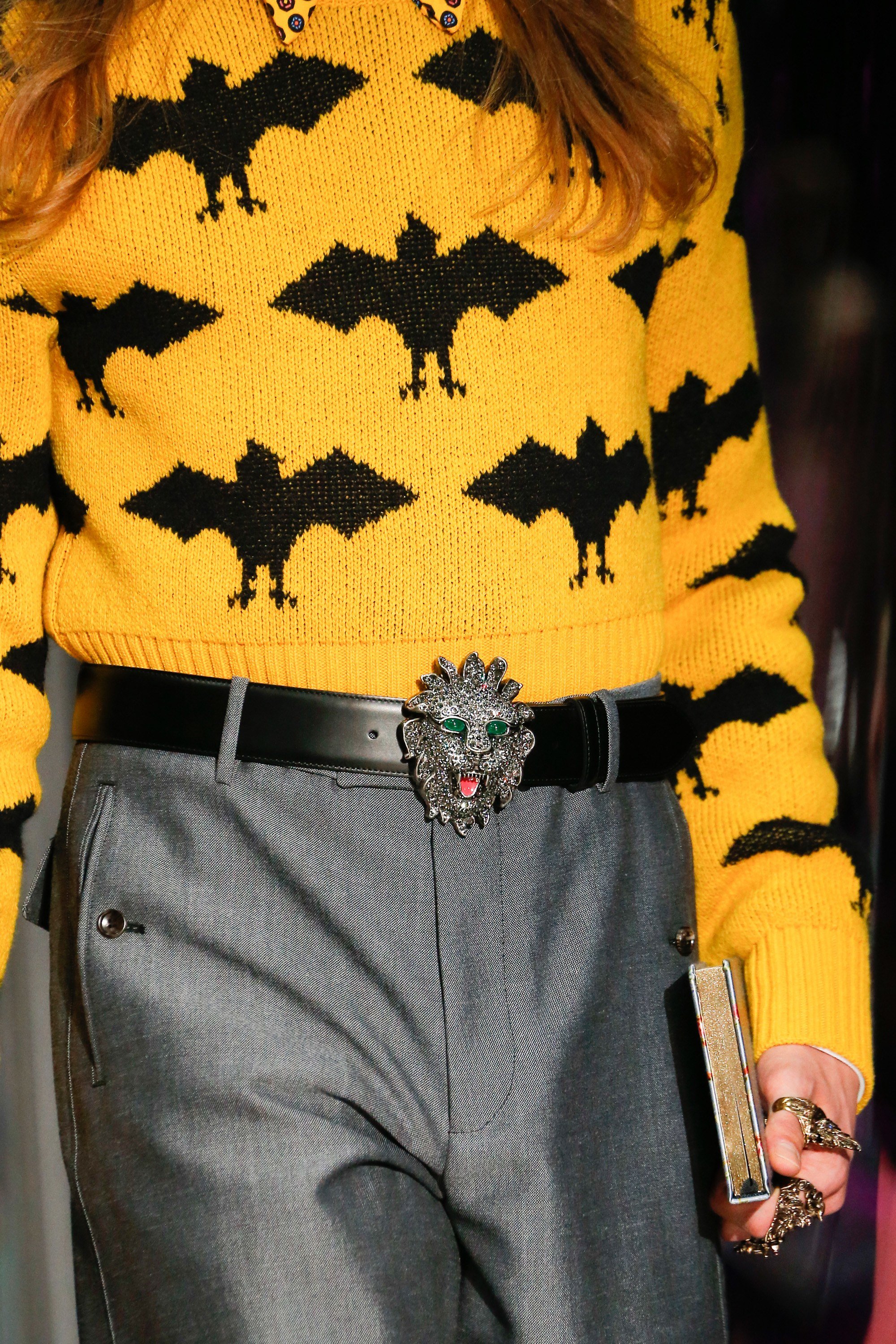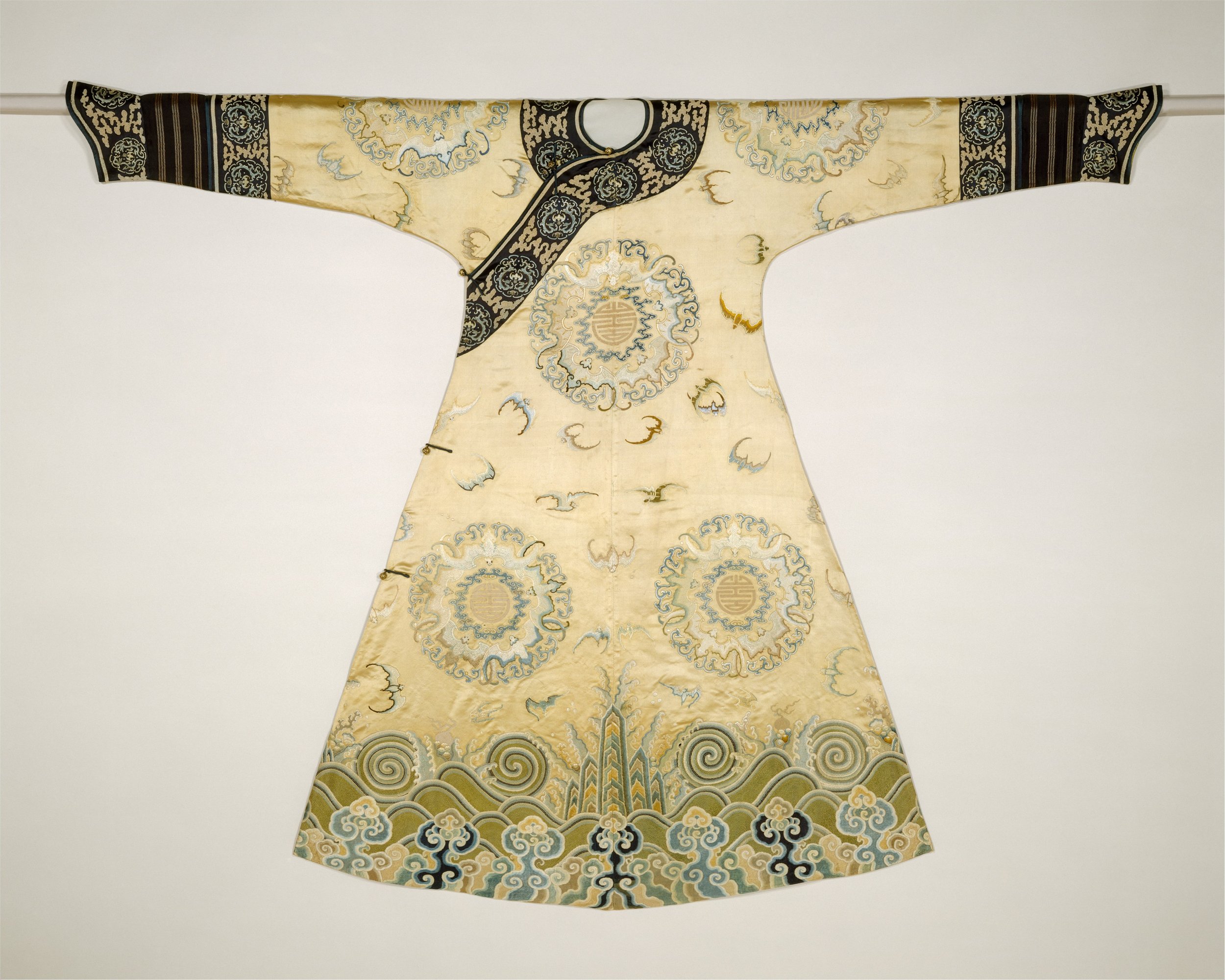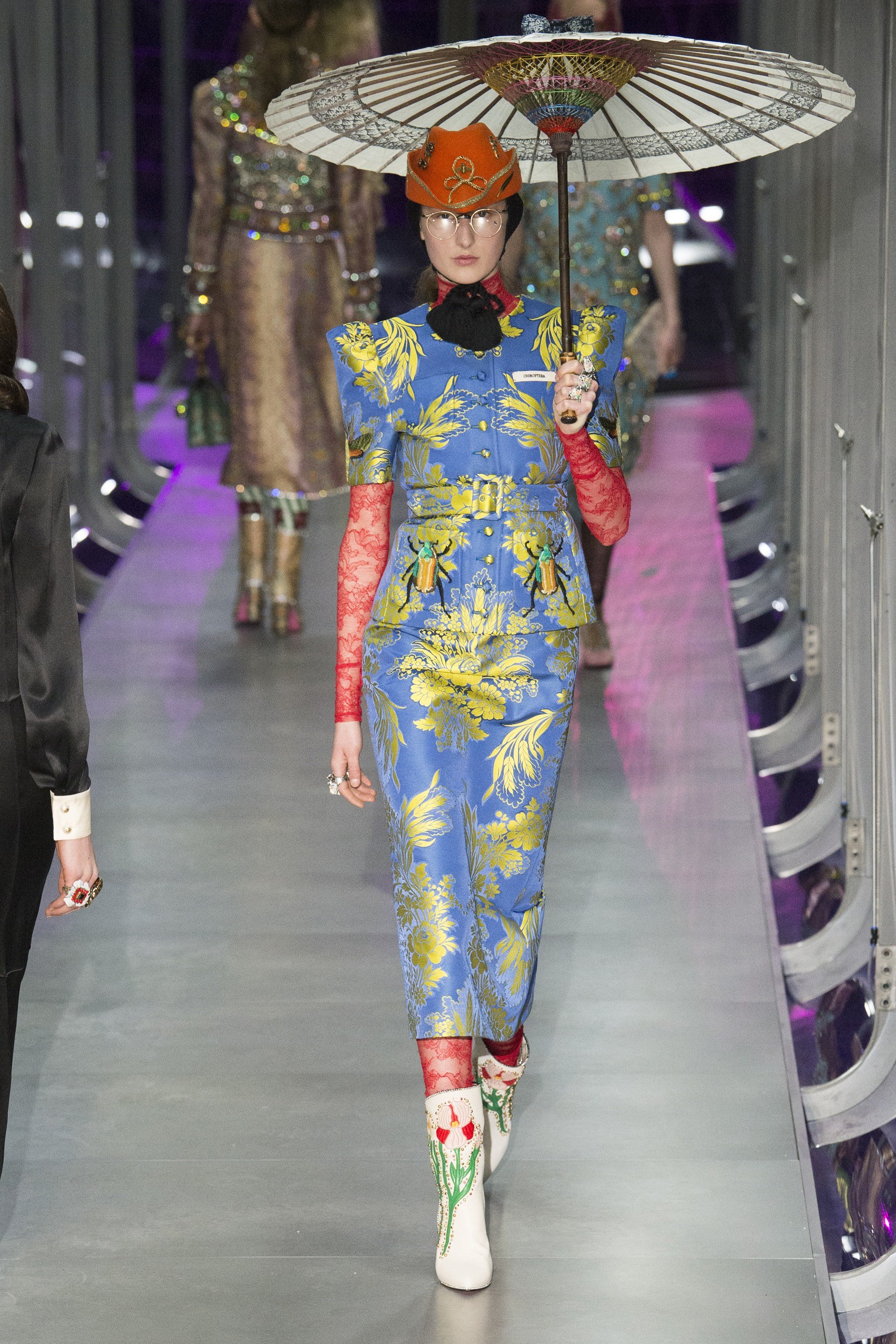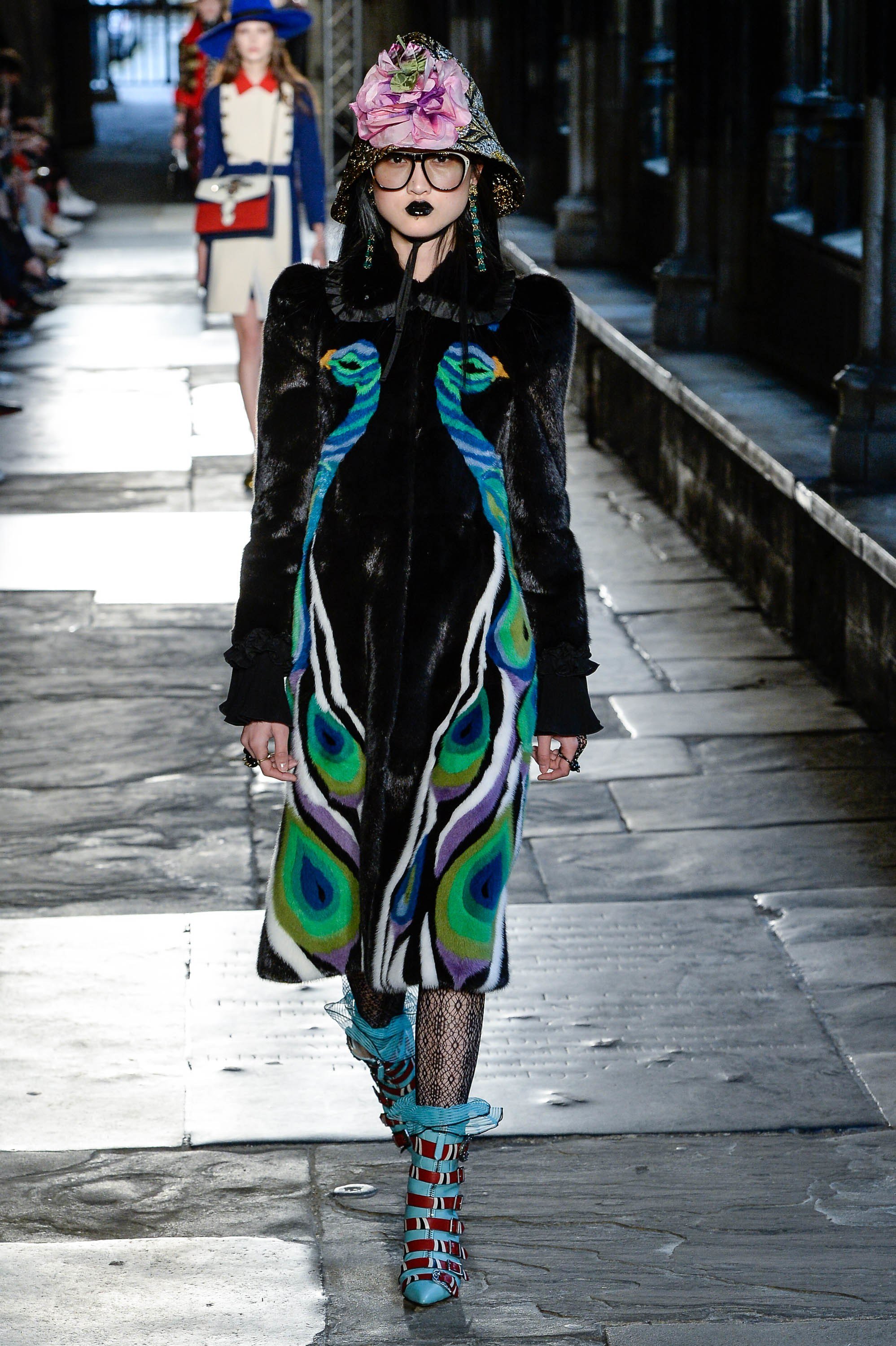Gucci’s Menagerie
Originally published on Chandelier Creative’s website in March 2017.
Founded in 1921 by Florentine Guccio Gucci as a leather goods and luggage company, Gucci from its early years had a close connection to the worlds of travel and adventure. Reflecting their clientele’s dynamic, well-traveled and sportif lifestyles, the brand very early on began incorporating animal motifs into their designs—Gucci’s famous horse bit icon drew from the passion for horseback riding among their Italian aristocrat customers. Since taking over as Creative Director in January 2015, Alessandro Michele has been drawing upon Gucci’s archives and this history of fauna fervor by incorporating a large variety of animal life into his designs. With each collection the designer adds several more creatures to his Gucci stable, drawing on their cultural symbolism to provide layers of meaning to his heavily referential and often occult-tinged themes.
The starting points for his A/W 2017 “Alchemist’s Garden” collection was Gucci’s legendary ‘Flora’ scarf. Originally hand painted by Vittorio Accornero in 1966 as a special gift from Rodolfo Gucci to Princess Grace, it features 43 different kinds of flowers, herbs and insects. Michele’s ever-increasing insectarium collects together dragonflies, beetles, ants, bees, ladybugs, moths, and butterflies. A lepidopterist and entomologist's dream, Alessandro Michele's collections for Gucci are a fantasia of insect life. Bugs are joined by a parade of mammals on clothing and jewels: tigers, rabbits, lions, horses, cats, foxes and many more. Gucci’s sparkling, brash menagerie is woven into velvet; formed into metal studs, large sculptural rings, and cascading earrings; beaded and sequined; patchworked out of fur; and even needlepointed. In light of the centrality of fauna to Michele’s creative vision, we investigate the symbolism behind some of Gucci’s most intriguing animal friends.
BATS
Michele’s sweaters bear the woven legend, “CHIROPTERA”—the Latin order for bats. The only mammals capable of sustained flights, these webbed wing beings have long been considered the “Guardians of the Night.” Similarly to the scarab beetles also premiering in Gucci’s A/W 2017 collection, bats are thought to symbolize rebirth; they are reborn every evening as they emerge from their womb-like caves. In the Old Testament they were considered “unclean,” and their nocturnal habits and eerie cries gained them a more diabolical reputation during the Middle Ages—it was thought by many in western Europe that witches transformed themselves into bats for their nighttime adventures, while bats often represented the devil in Renaissance paintings. As with all of these creatures there are very disparate meanings given to bats by different cultures—in China (where Gucci is considered the most desirable luxury brand) they are considered a symbol of good fortune and luck.
SCARAB BEETLES
The Scarabaeus sacer, or dung beetle, was regarded by ancient Egyptians to be the embodiment of the self-engendered creator god—their name for it was derived from the verb “to be created.” The god of the rising sun, Khepri, was depicted in Egyptian art as a scarab-headed man; thus the beetle became the symbol of rebirth, likened to the morning sun that is reborn each day. By the Twelfth Dynasty (early second millennium BCE) scarabs has become the most popular of all amulets, considered to have regenerative powers that made them particularly common in funerary rites. With the major excavations of Egyptian tombs in the nineteenth century came a growing interest in the culture of that civilization; ancient scarabs were imported into Europe and set into Victorian jewelry, and also copied in precious metals. The beetle reappeared in fashion in Elsa Schiaparelli’s Pagan collection (Fall 1938)—similarly inspired by many of the same Renaissance artworks as Michele, Schiaparelli created flat collar-like transparent necklaces studded with luminous insects and a petite chapeau topped with shocking pink bow and violet beetle.
PEACOCK
Amongst the many birds (including parrots, swallows and doves) that have soared across Michele’s designs, peacocks solely appeared in Gucci’s Resort 2017 collection yet they have a long and storied symbolic history. Peacocks were a favored motif during the Aesthetic movement: most visibly on the walls of James McNeil Whistler’s Peacock Room at Prince’s Gate, which was created in 1876-77. According to the art historian Hope Werness, the peacock is “linked predominantly and positively with beauty, glory, immortality, and wisdom,” as well as “the eternal and vital cycles of nature.”
SNAKES
For fall, “Flora” has been reworked by Michele to incorporate a twisting, sinuous snake as a textile print for dresses and separates. The same serpent first appeared embroidered on his version of a Nudie suit for Spring 2016, and writ large all over the carpeted floor of that runway. In western culture the snake is most commonly thought of in regards to the Garden of Eden in the Bible (Genesis 3:1), who tempts man and woman with the apple of sin. In the book of Revelation, Satan is called “the ancient serpent” while many cultures similarly equate snakes with evil due to the poisonous nature of their venom. Paradoxically they have also represented the healing powers of medicine since the days of ancient Greece (reflected in the staff of Asclepius). As snakes shed their skin during sloughing, they have become yet another animalian symbol of rebirth and transformation alongside Michele’s pet bats and scarab beetles. The cobra that appears in Gucci’s Resort 2017 represented hidden wisdom in Ancient Egypt, aligning with Alessandro Michele’s other occult symbols.
TIGERS
Michele throughout his designs incorporates elements and inspiration from the Far East, including the use of tigers and dragons. Both are signs in the Chinese zodiac with tigers representing power and strength. Considered to be the king of the animal kingdom by the Chinese, they believe that tigers often have on their foreheads the Chinese “mark of Wang,” or king, to be seen in the pattern of their fur (one vertical line with three horizontal ones passing through it). Woven into chinoiserie brocade for Spring 2016, tigers also sparkled across chiffon evening gowns for Spring 2017. A roaring tiger’s head also appears on t-shirts, sweaters and other pieces in Spring, Resort and Fall 2017 while the actual animal starred alongside models in the ad campaign for Spring 2017—proving Michele’s predilection for the big cat.
